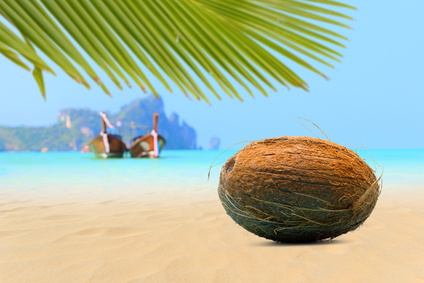Caribbean food has its roots from nearly everywhere people have come from who have ended up living in the Caribbean. It includes many staple foods, yet the uniqueness of the style is derived from the preparation. Food becomes a statement of the people, who create different ways of preparing the food in such ways as to make it distinctive and appropriate for a particular society. That analogy certainly applies to the food of the region because of the varieties and flavorful recipes that stand out as being of Caribbean food.
You will find specialty foods that cover the gamut of seafood, steak, and chicken where the flavorful and colorful recipes are very distinctive of the islands from which they are famous, but their origins go back to the original parts of the world from which they came. Coconut shrimp, chicken kabobs, jerk chicken, Guava Barbecue ribs, and Key Lime Pie, are just a few dishes that come to mind.
A very large part of family life in the Caribbean is focused and centered around food. The preparation of food for family gatherings, holidays and festivals can take days. The cuisine of the Caribbean has been likened to a patchwork quilt of varied ingredients and tastes that all blend together in a flow of delectable and wildly tasteful meals that have become cultural traditions.
With the abundance of the lush vegetation of the islands, combined with the diverse cultural background of the population, it is no wonder that you would come up with a wide variety of recipes that have evolved to what is present today. Influences from the original Arawak and Carib Indians, then from the Dutch, Spanish, British and French cultures, along with the African influence you get a rich mixture of foods and flavors. Other later settlers from China, India, and the United States added to the mix.
One of the basics found in the Caribbean diet is a yellow-reddish fruit called Ackee. It comes from Africa originally, and was introduced into Jamaica. The evergreen type of tree produces this fruit, which is also called ‘vegetable brains’ where the edible part tastes a bit like scrambled eggs, and is widely serves with salted fish, along with hot peppers and onions.
A soupy stew called Asopai, which is Spanish means ‘soupy’, is a very popular dish. It will contain a meat such as chicken, seafood or other meat, with onion, bell peppers, rice, olives, ham, peas, tomatoes, and capers.
The Chayote is a squash and is a member of the melon family. Other names for it are Cho-cho or Christophene. It is pear shaped and green, and is used quite extensively in salads, and can also be cooked in many different ways.
Other staples include the Boniato, which is a semi-sweet potato, and the Calabaza, which is a pumpkin like squash that has a sweet taste, which is used as a soup base for vegetable dishes and pumpkin soups.
Carambola is also called the ‘star fruit’, due to its shape when it is cut in a crossway manner. It is golden in color and very crisp, and is a favorite for desserts and salads.
Ceviche seafood is “cooked” in the acids of citrus juices and onions and fresh herbs are added for additional flavor.
Chutney is a blended dish made up of tropical vegetables and fruits that are cooked along with spices and peppers. Mango chutney is traditionally served along with curries.
Curries originated from India when indentured servants emigrated to the area. They are gravy-based dishes that are highly seasoned and are found in dishes from Jamaica, Trinidad, and Tobago. Ingredients such as cumin, coriander, turmeric, cayenne and black pepper, and fenugreek, along with the Caribbean addition of allspice, make the taste of the curries exceptional.
Coconuts are found on most of the islands of the Caribbean and is used in many dishes. There is a liquid inside of the coconut and the coconut should be shaken before being purchased. The liquid, or water can be drained by punching holes in the ‘eyes’ and draining it. When the liquid is drained, the shell can be cracked with a blow from a hammer and the meat will be available.
A pan-fried or poached seafood, marinated in citrus, vinegar and herbs called Escabeche, or Escovitch by the Jamacians is a delicious staple for many people. Guava is a bright red to orange tropical fruit that looks like a small melon. It is used in jellies, pastes and compotes. It has an intense flavor and is used a lot as a spread on crackers and can be served with cream cheese.
The term “jerk” and “jerky” is based on the original process of rubbing acidic hot peppers and spices onto meat strips to tenderize and preserve them. An entire art form grew up around the process, primarily in Jamaica, Trinidad, Tobago and Barbados. Most of the recipes for jerk include scallions, allspice, thyme, hot peppers, garlic and onions. Vinegar and citrus juices can be added to employ tartness. Chicken, pork, and fish are the primary meats that jerk is used for, as it has developed a legendary quality of its own all throughout the Caribbean.
Stamp and Go Codfish which is fried in a heavy onion flavored batter, spiced with annatto and chilies, is popular in Jamaica. This “Stamp and Go” was a command given by 17th century English sailors when they were given orders to do something and get in done quickly.
There are many more examples of Caribbean food that marks the region as a culinary paradise. The combination of cultures which has occurred here over the past several hundred years, has left a rich tradition of recipes that has not only defined the people, but has given us a wonderful variety of dishes that are delightful to experience.







